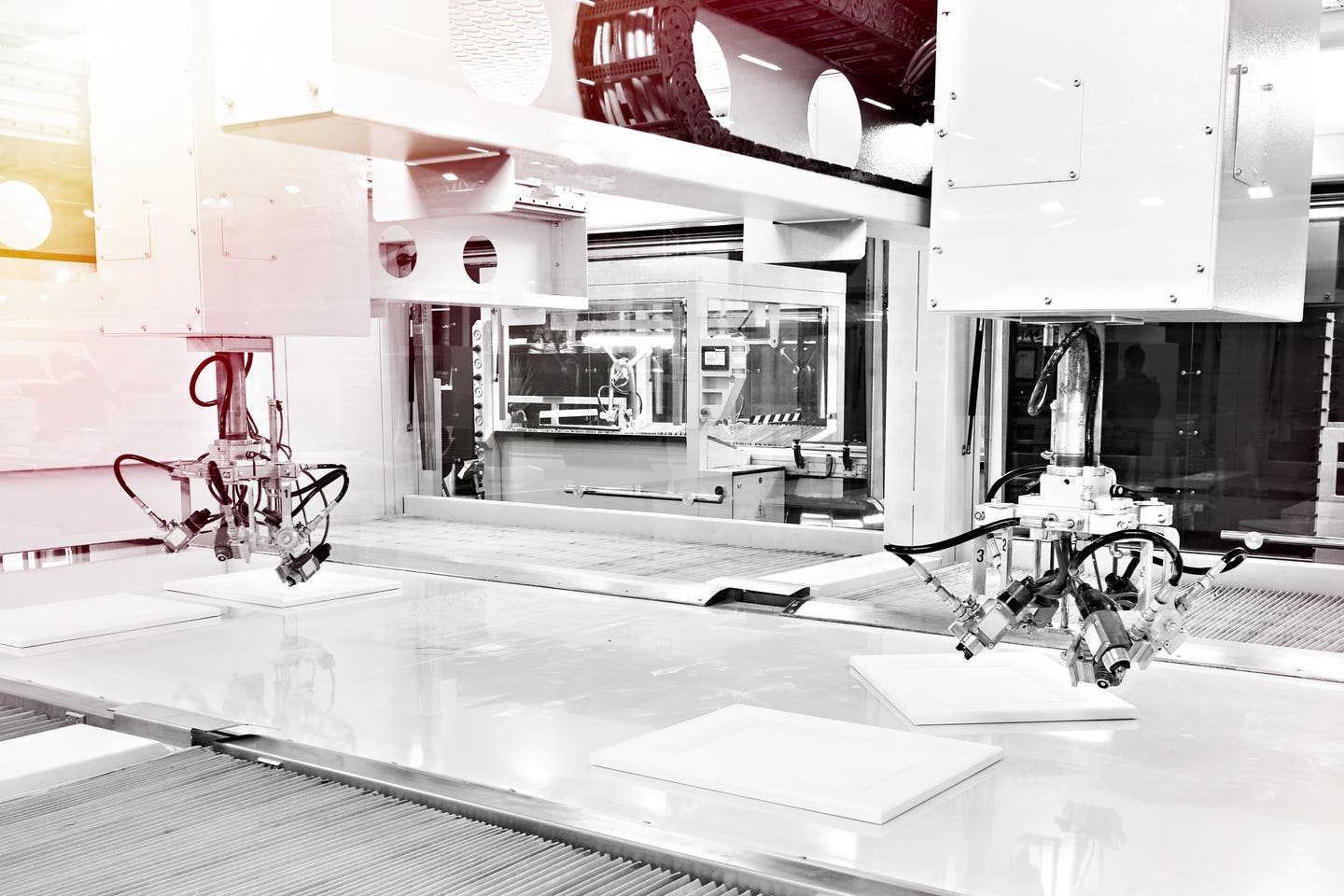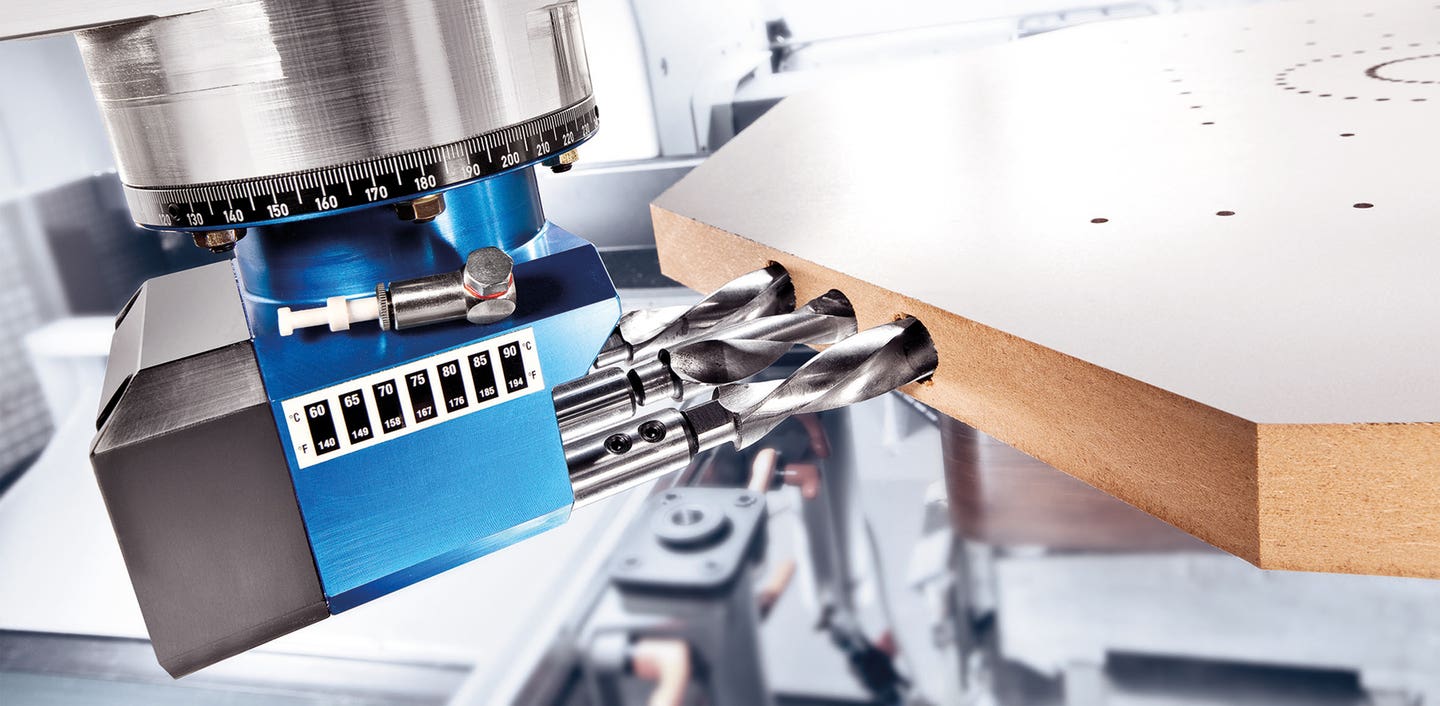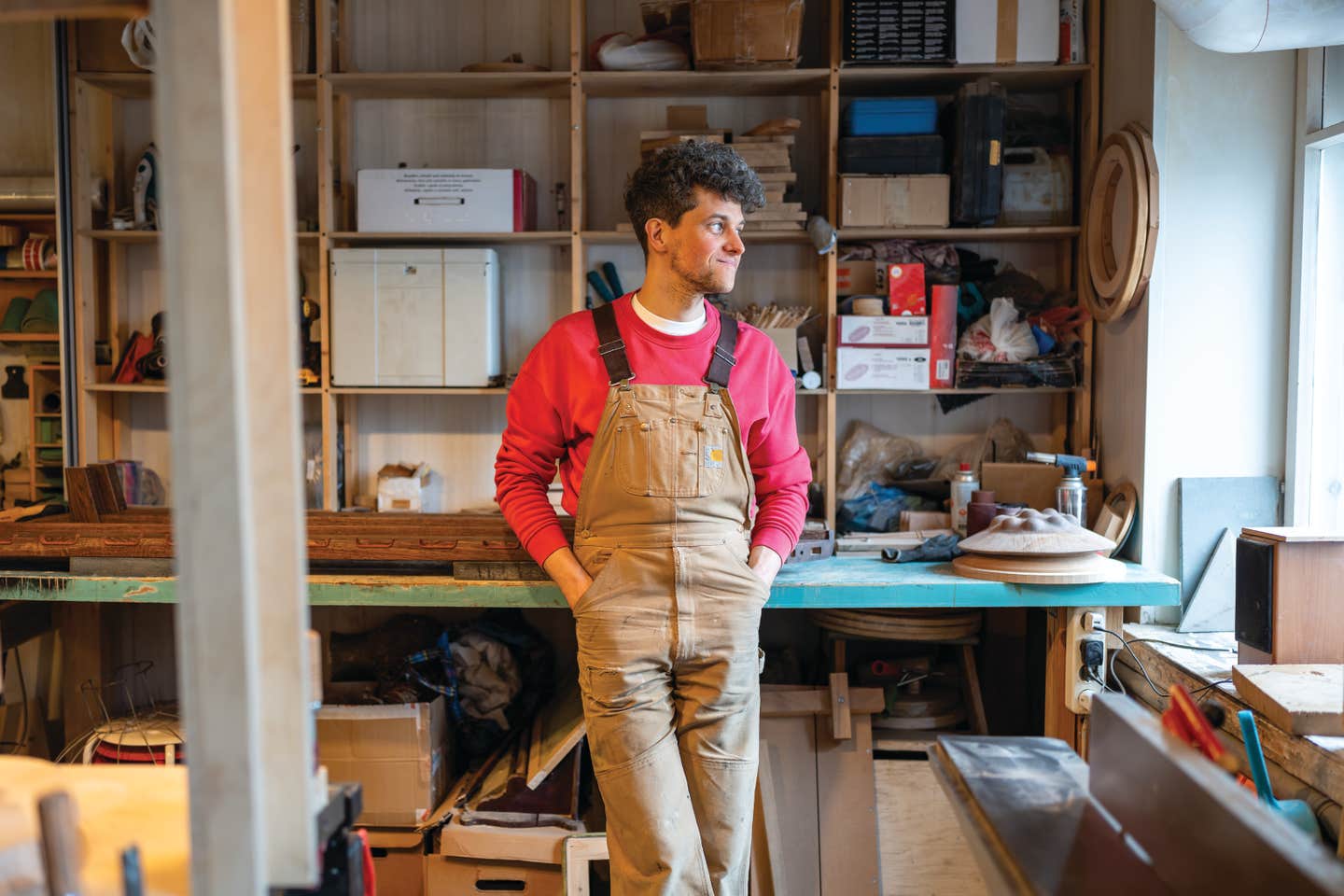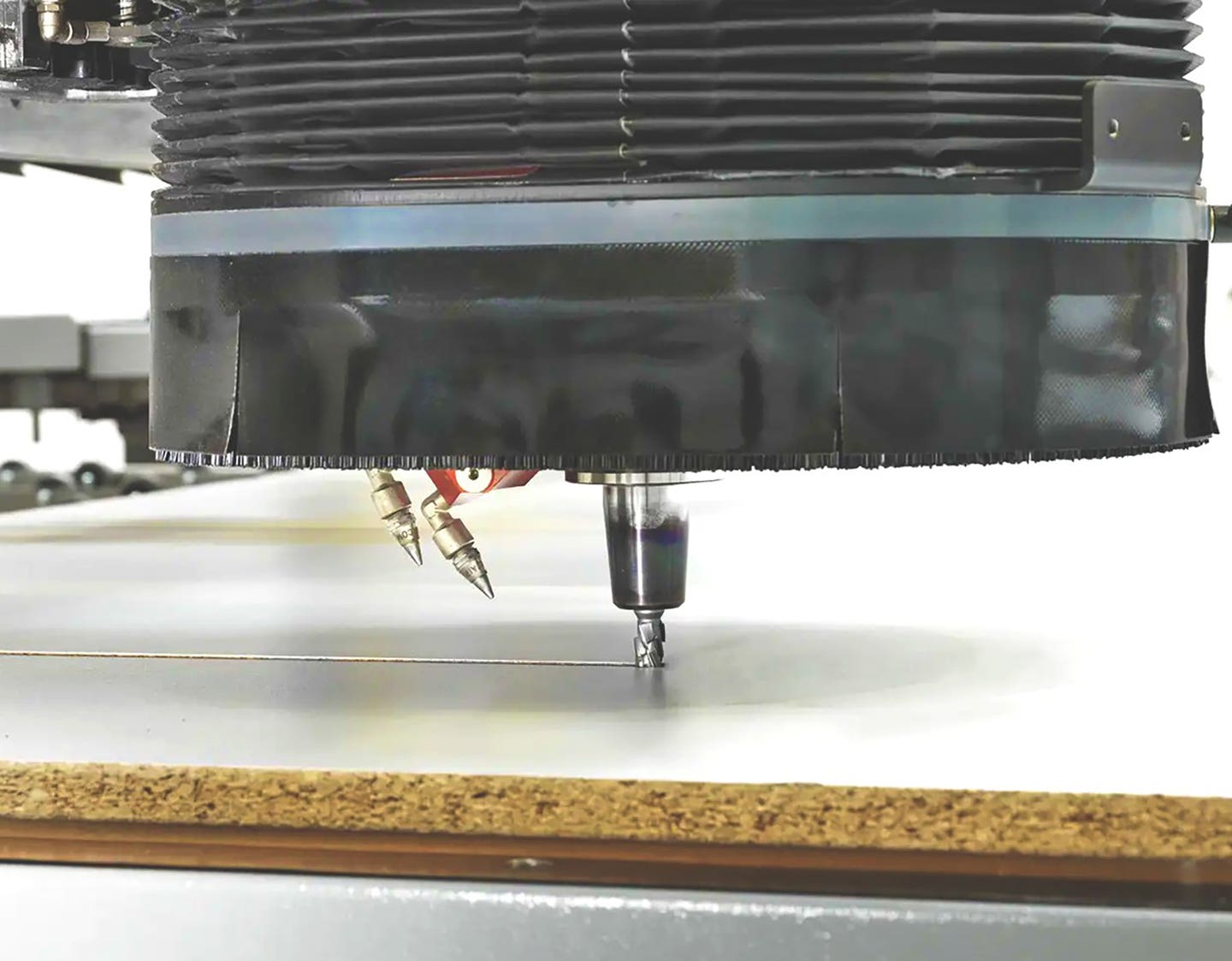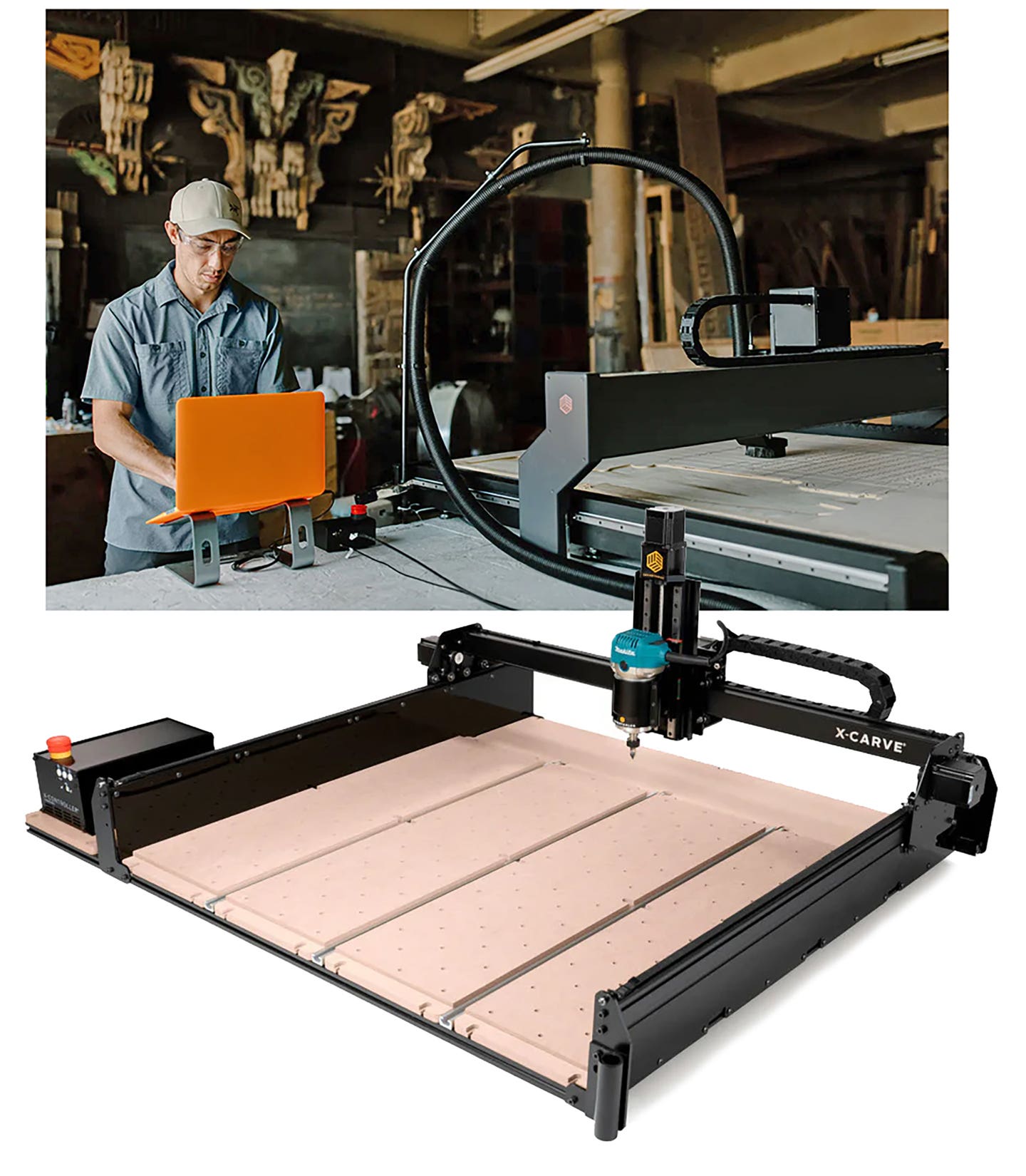Waste not, want not, cash in
In business, it’s almost always better to act rather than react. When it comes to waste, creating less is a more profitable choice than disposal. But how does a shop…
In business, it’s almost always better to act rather than react. When it comes to waste, creating less is a more profitable choice than disposal.
But how does a shop create less waste? To answer that, a manager will need to know exactly what kinds of waste are being generated and the volume of it. Every shop is different. One also needs to look beyond the garbage can. Is there too much inventory on the shelves, wasting storage space and cash reserves? Is there too much travel or materials handling in the shop, wasting time? How about the utilities and physical space? We’ll come back to those questions, but first let’s take a look in the dumpster. There are few things more disheartening to a shop owner or manager than watching good materials being thrown away.
Optimization
Most woodworkers, especially those who operate CNC software, are familiar with the concept of optimization. It’s most obvious form today is nesting. But optimization has been with us a long time. For example, Isaac Newton used it back in the 1600s to find mathematical solutions. He was using iterative methods (they break a large problem into smaller ones) to find the most efficient way to arrive at a logical conclusion. Woodworkers still use those methods today. The most obvious example is that we don’t build a kitchen as a single giant cabinet. We break it into manageable units (single cabinets) that are later combined to create the whole.
Optimization means getting the most out of available resources.
A couple of months ago, Rod Schaeffer retired from running a wholesale hardwoods business in the Midwest. His clients were cabinet shops and finish carpenters. After decades in the business, he still scratches his head when talking about the way people buy lumber.
“I’d have guys come in every week and order a bunk of 16-foot red oak for a trim job,” Schaeffer told Woodshop News. “They’d pay a premium price for length, haul it to an install … and then chop it all into short lengths for window and door trim. They could have saved a fortune over the years by buying shorts or even random lengths. I used to suggest they make a list of the actual sizes being used on each job, throw those numbers into an Excel worksheet and figure out the most efficient way to order. The results would be based on actual job history and not just guesses. Nobody ever did that, though. I guess those 16-footers just looked prettier.”
His point is simple. Long boards usually cost more, so if you can use shorter ones, then order them that way. If the shop is building face frames, most of the longest requirements will be 42” for upper stiles. Why pay a premium for 192”? Plus, those 16-footers only deliver four-and-a-half stiles and all of those halves can really add up over time. Many of them can be used for rails in narrow cabinets, but many can’t.
A lot of hardware nowadays comes in blister packs with, say, a dozen pulls. It’s conceivable that individually packing knobs in little plastic bags will soon be reserved only for top-of-the-line designer hardware. The blister packs usually come from China and the quality is sometimes suspect. But if a shop finds a reliable line of product, the cost per part can be extremely low. One can often find a pack of 12 for the price of two or three individually wrapped parts. To optimize that effect, a shop can push particular pulls so that the excess from one job spills into the next. The most obvious way to popularize a line of product is to install it on the showroom fixtures. If you use 37 pulls on a job, the 11 remaining in the fourth blister pack will soon find a home if you make a conscious effort to steer customers toward them. By offering a two-tier hardware option, you can still deliver those expensive designer solutions at a premium price and your “standard” line (from the blister packs) can be offered at a more affordable markup. In this case, good marketing can help control waste.
Drawing solutions
Sheet goods create a lot of waste. Even if a shop doesn’t have a CNC router, the manager or draftsman can still use design software to figure out the most economical way to carve up sheets and build projects. Programs such as Cabinet Vision, Vectric, ArtCam, Mozaik, KCD Software, Microvellum, CabinetPro and CabMaster all offer optimization tools and most have design and rendering programs, too. Many of them will even price out the job.
Most software now offers labeling, where parts can be identified with stickers or stamps that allow assembly crews to keep track. The software that does that works from a spreadsheet or a database that lists every side, bottom, back, etc. There’s no reason a shop couldn’t create a simple spreadsheet to keep track of the cutoffs, too. The columns could identify parts by material (plywood, MDF, etc.), thickness, face material (plastic laminate, melamine, veneer by species, and so on), width and length. Keeping an inventory of material that is less than a full sheet allows a project manager to use up all the possible cutoffs before starting in on new stock. And having the information at your fingertips means that nobody has to walk out to the lumber rack and figure out what’s usable at the start of every job.
Software packages that design and draw cabinets and furniture are quite inexpensive. Learning how to use them means that the shop is much better positioned if and when it acquires CNC capabilities. And shops that are already up and running will find it quite easy to sticker and track partial sheets and control this one aspect of waste.
Alternative uses
It’s relatively easy to find a way to use waste, rather than just discarding it. Some shops burn everything during the winter in an outside furnace that helps heat the shop. But there are lots of other ways to use up scraps. If there is a woodworkers’ club in the city, most of them build toys for children or perhaps flag cases for veterans and so on. As long as the club is a 501(c)(3), then a woodshop’s donation of scrap wood is entirely deductible at cost (just work out the board feet to figure out what you originally paid).
Wood pellet plants will often buy waste, especially sawdust, but also short cutoffs, and reduce it to fuel. Chipboard and MDF manufacturers — and even paper mills — might also purchase waste, although their requirements can get complicated. Shops that plane a lot of solid wood can sometimes sell the shavings as animal bedding, although many species are not suitable. Outlets for bedding include everything from dairy barns and zoos to pet shops. Landscapers are often delighted to get sawdust and chips as they can use it in making charcoal-based fertilizers (the wood is burned and then mixed with organic waste) or as mulch on fall plantings that need a little protection during the winter. Mulch can also be used to help control volunteer weeds. And if there’s a biomass power plant anywhere near you, give the buyer a call.
Supermarket chains, butchers and similar retailers like to buy clean wood waste to mop up spills, but they’ll want you to package it in manageable units — perhaps something like 30-gallon plastic bags. If you don’t want to deal with that, then outfits such as Sawdust Supply in Seattle (www.sawdustsupply.com) specialize in recycling larger volumes of wood waste.
If none of these suggestions work and you’re having trouble finding a way to get rid of clean waste, try an ad on Craigslist or Facebook. It’s amazing what creative people come up with and there’s probably somebody close by that wants your waste for something that would never have occurred to most of us — perhaps stuffing toys, soaking and compressing it into sculpture, firing pottery kilns and many other creative uses.
Lean management
Waste isn’t always comprised of detritus such as dust, chips and cutoffs. Sometimes it’s a little subtler. A shop that carries too much inventory is usually wasting square feet and cash reserves. Buying “just-in-time” is a better way. That begins by placing an order for only the materials one will use, rather than rounding up to convenient or habitual numbers (as in, I only need 47 sheets, but send me 50). Then the material should arrive at the shop a day or two before it is needed, rather than eating up space for weeks or months.
Once in the shop, materials need to be stored conveniently and managed in a way that the least amount of time and effort is being expanded moving them around. That sounds simple, but here’s an eye-opening exercise. Follow a single sheet through the shop and see how many times it is touched and moved. You might be surprised.
One other area of waste control is the utilities. Switching to more energy-efficient bulbs and ballasts can make a big difference in the electric bill. Separating heating and cooling into zones usually means that work spaces are warm in winter, but storage spaces can be cooler and vice versa in summer. Motion detectors can turn lights on and off as needed. And, before you fill the dumpster, is there any way to harvest heat calories from the stuff you’re throwing away? Check out wood-burning furnaces online, but make sure you look at remote models that sit outside and don’t threaten the woodshop.
This article originally appeared in the November 2015 issue.


